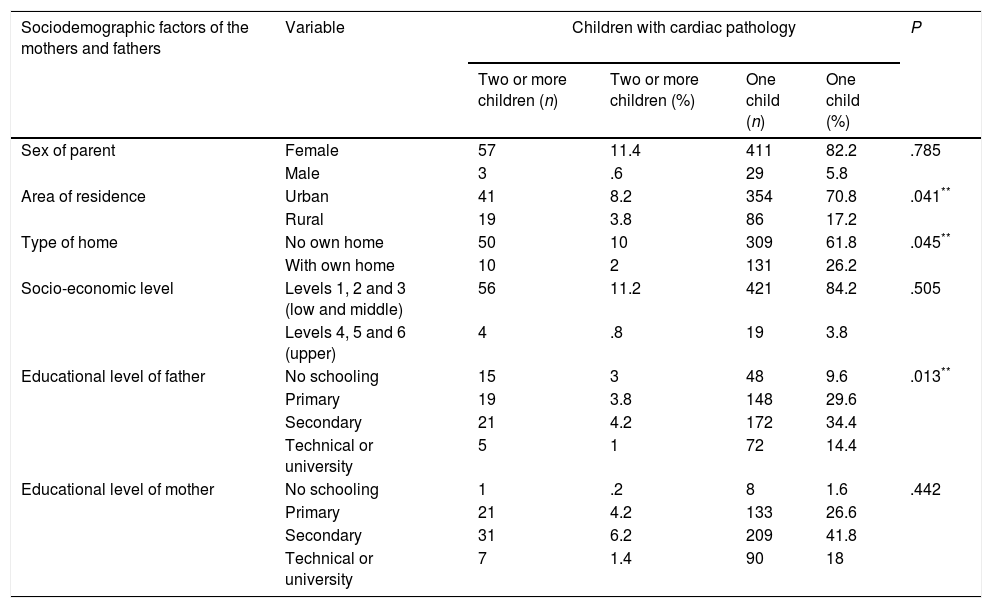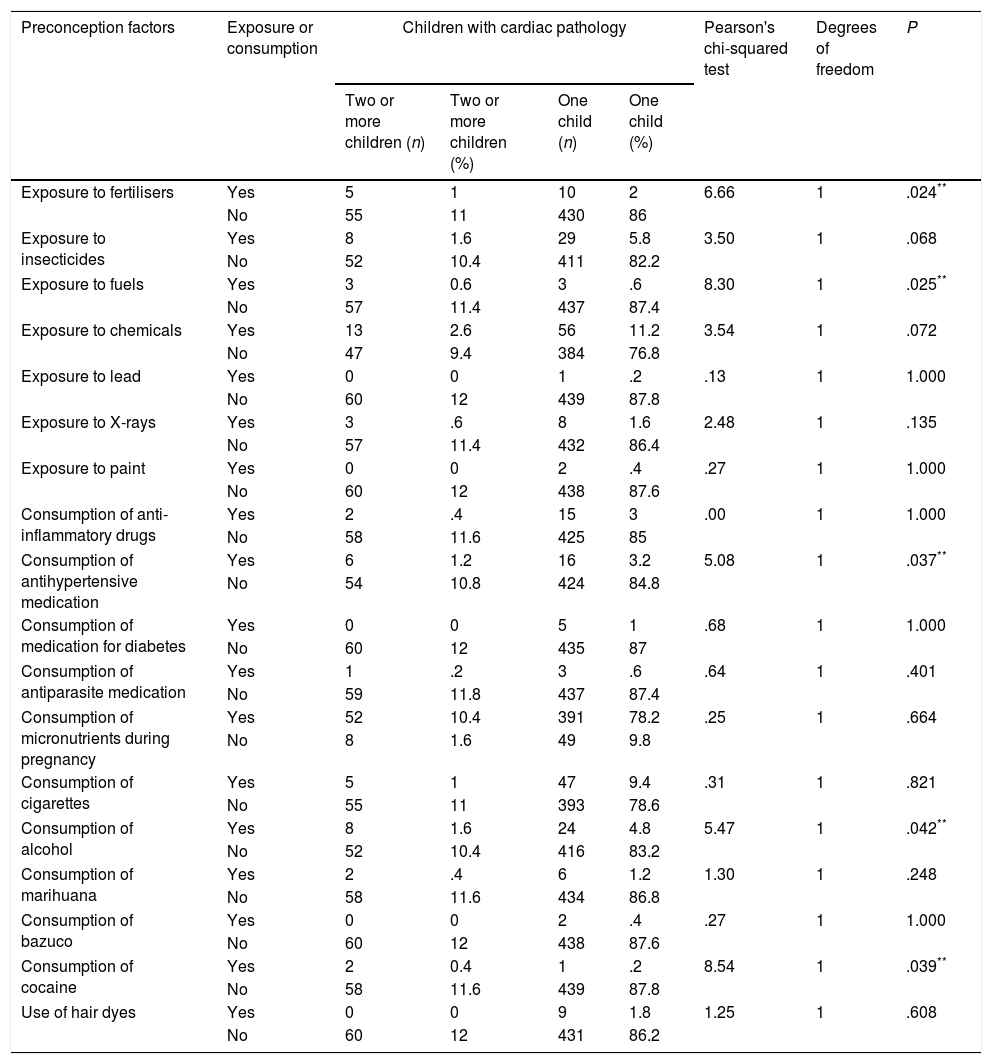To identify the preconception risk factors in parents of children suffering from congenital cardiopathy.
MethodA cross-sectional descriptive study, which included parents of children suffering from cardiopathy, attended at consultations in a not-for-profit organisation, in order to be diagnosed and referred for heart surgery or to be assessed in postoperative cardiac monitoring. The sample population included 500 people who responded to a survey for the identification of socio-demographic and preconception risk factors.
ResultsCouples were found with up to 3 cardiac children. Parents with 2 or more children suffering from cardiopathy were classified in the majority as belonging to the middle socioeconomic level and not owning their own house. An association with the number of children with cardiopathy, the educational level of their parents (P=.013), their home area (P=.041) and type of accommodation (P=.045) was found. Regarding the preconception risk factors, there was evidence of statistically significant associations among the number of children with cardiopathy and their exposure to fertilisers (P=.024), their exposure to fuels (P=.025), the use of antihypertensive medication (P=.37), and alcohol consumption (P=.042) and cocaine use (P=.039) by their parents.
ConclusionsThe population of parents with a greater number of children suffering from cardiopathy were characterised as having socioeconomic and educational constraints. The preconception risk factors which show an association with the number of children suffering from cardiopathy were characterised as physical and/or chemical environmental risk factors and the consumption of certain psychoactive substances and medication by their parents. It is necessary to analyse each risk factor separately, taking into account the different types of cardiopathy.
Caracterizar los factores de riesgo preconcepcionales en padres y madres de niños con cardiopatías congénitas.
MétodoEstudio descriptivo de corte transversal que incluyó a padres y madres de niños con cardiopatías atendidos en consulta en una organización sin ánimo de lucro, para ser diagnosticados y direccionados a cirugía cardiaca o para ser valorados en control postoperatorio de cardiología. La muestra estuvo constituida por 500 personas, a quienes se aplicó un cuestionario para la identificación de los factores sociodemográficos y los factores de riesgo preconcepcionales.
ResultadosSe encontraron parejas hasta con 3 niños cardiópatas. Los padres que tenían 2 o más hijos con cardiopatías se caracterizaban por pertenecer mayormente al estrato socioeconómico medio y no poseer vivienda propia. Se encontró asociación entre el número de hijos con cardiopatías y el nivel educativo de los progenitores (p=0,013), la zona de residencia (p=0,041) y el tipo de vivienda (p=0,045). En cuanto a los factores de riesgo preconcepcionales, se evidenciaron asociaciones estadísticamente significativas entre el número de hijos con cardiopatías y la exposición a fertilizantes (p=0,024), la exposición a combustibles (p=0,025), el consumo de medicamentos antihipertensivos (p=0,037), el consumo de alcohol (p=0,042) y el consumo de cocaína (p=0,039).
ConclusionesLa población de padres que poseían un mayor número de hijos con cardiopatías se caracterizaba por presentar limitaciones socioeconómicas y educativas. Los factores preconcepcionales que muestran asociación con el número de hijos con cardiopatías se caracterizaban por ser factores de riesgo ambientales de tipo físico y químico, además del consumo de algunas sustancias psicoactivas y medicamentos. Es necesario estudiar cada factor de riesgo teniendo en cuenta los diferentes tipos de cardiopatías por separado.










